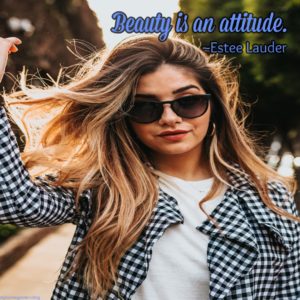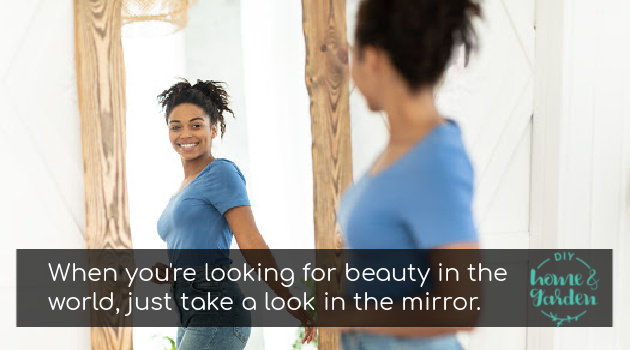Long, polished nails are a beauty to behold. They are a sign of healthy nails. But did you know that both length and polish can compromise the health of your nails and render them brittle, weak, and chipped?
The aesthetic and health qualities of nails influence each other. Beautiful nails indicate good health, and good health is essential for beautiful nails.
So, how do you get strong, healthy nails? Avoiding nail-care choices that compromise their strength and beauty is important. Also, taking care of your health is equally significant.
In this article, we will explore these two nail-care issues by answering two crucial questions:
- What causes damage to nails?
- How do I maintain natural, healthy nails?
Read on to get the ultimate answers to each question.
Damage to Nails: What Causes it?
There are several indications that your nails are damaged. We already named brittle, weak, and chipped nails. Discolored nails, thickened nails, lifted nail plates, ridged nails, paronychia, bacterial and fungal infection are all conditions that damage your nails. Lets us explore the causes of each of these damages.
1 – Brittle nails
Brittle nails are deformed. This malformation can be triggered by many causes. If you drop a heavy object on your nail or subject it to any form of trauma such as hitting it on a hard surface, your nail will be brittle. Dehydration is also a common cause of brittle nails.
A brittle nail is also indicative of an injured nail bed. If this is the case, your nail already grows deformed with thick and readily noticeable ridges.
Whereas brittle nails can be a sign of aging, the conditions underlying deformed nails are more related to trauma and health issues.
2 – Weak nails
Weak nails can be a sign of aging. But when this is not the case, there may be other underlying health or nail-care related causes.
Care-related causes of weak nails include too much polishing without giving nails the time to breathe and rest, using acrylic nails, having your hands always in water, exposure to chemicals contained in detergents, nail polish removers, and nail treatments.
Health issues that cause weak nails range from vitamin B, iron, fatty acids and calcium deficiencies, anemia, and hypothyroidism.
3 – Chipped or splitting nails
Nail splitting is sometimes described as Onychoschizia but the term incorporates other nail conditions like brittle and thin nails.
Chipping affects the nail plate which splits at the nail matrix or grows in layers. It is often caused by constantly having your hands in water, exposure to harsh chemicals in nail products or detergents, exposure to trauma when nails are used as tools to work vegetables, clean between teeth, and the like.
Health-related conditions may rarely be the underlying cause of chipped nails. Iron deficiency is the most probable.
4 – Discolored nails
Nail discoloration manifests in a pink, yellow, brown, or white tan on nails. It is one of the forms of nail damage that often announces an underlying health condition. Iron-deficiency anemia, hypothyroidism, lung and kidney disease are all possible causes of nail discoloration.
Though you should be careful about diagnosing yourself, it is advisable to see a doctor if your nails are discolored.
Discolored nails may also be caused by nail-care practices such as exposure to hair-coloring products, staining foods or herbs like turmeric, some types of nail polish, or an injured nail bed.
Ingesting certain drugs can also be the cause of discolored nails. People who smoke or those undergoing chemotherapy may notice discolored nails. Some antibiotics or antimalarial drugs may also be the culprit.
5 – Nail Melanoma
Do you know that your nails count as skin? And like all skin, nails can be affected by cancer. Though rare, a widely known type of nail cancer is Subungual Melanoma.
Nail cancer may manifest in symptoms like a darkened nail plate and the skin surrounding the nail, a lifted nail plate due to the underlying tumor, a bruise-like abscess, or brittle and extremely cracked nails.
Most skin cancers are caused by exposure to sun rays. But nail melanoma may result from injury or trauma or may also be age-related.
6 – Thickened nails
Thickened nails may come with age. But when age is not responsible for this damage, fungal infection, injury, poor blood circulation at the extremities, arthritis, ill-fitting shoes, and psoriasis are all causes underlying thickened nails.
Thickened nails may manifest more on toenails compared to hand nails.
7 – Lifted nail plates
A lifted nail plate has been separated from the nail bed and will often turn white. This may come with aggressive cleaning under the nail, nail products with harsh chemicals like formalin, the pressure of removing acrylic nails, psoriasis, and fungal infections.
8 – Ridged nails
Ridged nails are a common type of nail damage. They can manifest horizontally or vertically on the nail plate. Common causes of ridged nails include aging, trauma to the nail matrix, exaggerated care to the nail cuticles, or some illnesses counting eczema, vascular disease, rheumatoid arthritis, and fever among others.
Nail ridging may also come with age.
9 – Paronychia
Paronychia is synonymous with inflammation of the skin around the nail. It often announces the presence of bacterial infections, mainly the Staphylococcus aureus.
Paronychia is rather painful and comes with swelling and redness around the nail cuticle. A yellow-green discharge will also show as a symptom.
Causes of nail inflammation may also be related to consistent exposure to water and underlying bacterial and fungal infections.
It is important to treat paronychia ASAP because it can easily spread to other nails.
10 – Other damages
The list of nail damages is endless. We could name a few other possible nail damages including ingrown nails, unusual nail shapes, and splinter hemorrhages among others. A lot of the causes explained for the damages discussed above are also the reasons for these additional nail conditions.
Now that we’ve identified the causes of damage to your nails, let’s look at the solutions.
10 Tips for Natural, Healthy Nails
With a never-ending list of nail damages, it important to be knowledgeable about their prevention. This has everything to do with the daily efforts and choices towards maintaining natural, healthy nails.
Keep reading for a comprehensive list on how to get strong, healthy nails
Tip#1: Use essential oils for nail care

Many simple and effective DIY nail care options can be made using essential oils. The main advantage of using essential oils for nail care is that your nails will stay hydrated, keeping away all the nail damages related to dehydration and exposure to harsh detergents and nail products.
This DIY cuticle oil will work wonders on your dehydrated nails and cracked cuticles. It is a combination of Vitamin E, jojoba oil, lemon, and lavender essential oils. The lavender and jojoba oils are hydrating while the vitamin E strengthens both the nail and the cuticles. The lemon is antibacterial.
Oh, and by the way–it does smell FANTASTIC! Making it in a roll-on unit enables you to carry it with you for quick application as needed. However, you may also recycle an empty, clean nail polish bottle and brush on the oils.
Invest in a few basic essential oils, and you can benefit in many ways. For example, the lavender essential oil is also a natural insect repellent and a wonderful home remedy for cough and cold care.
How to Make and Essential Oil Roll-on for Cuticle and Nail Care
Equipment
- Paper towel to cover your work area--that's it!
Materials
- Jojoba oil
- Vitamin E liquid
- Lemon essential oil
- Lavender essential oil
- Roll on bottle
Instructions
- Gently wiggle off the top of your roll on bottle. Do not use force, as you might break it.
- Jojoba oil is your carrier oil. Carefully pour in the jojoba until your rol on is approximately 3/4 full.
- Add 6 drops from the Vitamin E bottle by giving it quick, firm squeezes with a quick release (otherwise you will stream instead of drop the product into the roll on)
- Add 15 drops each of lemon essential oil and lavender essential oil.
- Carefully place the roller head back onto the bottle. Hold it in place with your thumb and shake the ingredients to mix them thoroughly.
Notes
Tip#2: Eat right
Good nutrition is an indispensable choice when it comes to nurturing healthy nails. As with other health issues, a diet with the right amount of vitamins and minerals is essential for your nail health.
Dermatologists recommend a diet rich in the following foods for healthy nails and skin: f
- Lean meats (beef, turkey, chicken)
- Eggs (protein, biotin, vitamin D, A, and E)
- Salmon (biotin, Omega 3 fatty acids)
- Beans and legumes (lentils, lima beans)
- Dark leafy greens (broccoli, kale, spinach)
- Yellow/red vegetables (carrots, sweet potatoes, bell peppers, tomatoes)
- Nuts and seeds (flaxseeds, almonds, sunflower)
- Fortified milk (calcium and vitamin D)
- Wheat-based beer ( silicon for strong nails)
- Whole grains (brown rice, oatmeal)
Tip#3: Choose your nail products with care
A lot of nail polishes, nail polish removers, and nail treatments have chemicals that are harmful to your nails and skin. Read your product label before purchase and avoid these chemicals by all means.
- Dibutyl phthalate (DBP)
- Toluene
- Camphor
- Formaldehyde and Formaldehyde resin
- Acetone
Even though most of these are recommended as anti-chipping and nail-smoothing remedies, they will destroy and weaken your nails with time.
Tip#4: Seek professional attention
Once in a while, the attention of a professional in nail care is the best choice for preventing damage to nails or remedying existing ones.
How often you visit a professional may also depend on the status of your nail health. For example, brittle, deformed nails should be taken care of by a professional regularly.
In all cases, the professional may be a manicurist/pedicurist or a dermatologist if the case requires it.
Tip #5: Stay away from acrylic nails and gels
Acrylic nails are an appealing option for natural long nails. But their frequent use will subject your nails to peeling and eventually weaken them.
If you must, wear acrylic nails and gels sparingly and be gentle when fixing or removing them.
Tip #6: Limit exposure to water and wear gloves
Having your hands in water always weakens your nails and makes them brittle. Since it is almost impossible to completely stay away from having your hands in water, it is advisable to wear gloves every time you wash dishes, take a bath or do house cleaning.
Tip #7: Take a break from nail polish
If your nail plates never see the light of day, chances are they are weakened from never breathing naturally. Yes, 1-2% of cutaneous respiration in humans is compromised by always coating your skin.
If you enjoy the aesthetic appeal of well-done nail polish always, you might have to put up with damaged nails forever at some point. The rule of thumb is ‘a week of no polish for every week with nail polish.
Tip #8: Trim your nails
Yes, shorter nails are healthier. As much as long nails may make a better aesthetic statement, longer nails are more prone to damage and trauma. Because they are less likely to be chipped or cracked, shorter nails are your healthier and stronger option.
Tip #9: File your nails correctly
Most of us will pick the first nail file we set our eyes on at the beauty supply shop. Bad! Using a soft nail file is recommended.
Using a file correctly also has its value. Opt for unidirectional motions when filing nails and go from the outside to the interior to give your nails a better finish. Filing like you are using a hacksaw is an absolute no. You will only weaken your nails as you will also do with too much filing.
Tip #10: Additional tips
As with the list of damages to nails, the list of nail care tips is endless. Here is a quick list of other nail care tips you should have in mind.
- Avoid alcohol-based hand sanitizers.
- Soak your nails in a paraffin wax bath now and then to soothe and moisturize your nails.
- Protect your nails from harsh detergents and shampoos.
- Keep your hands/nails always moisturized and avoid dehydrating products.
- Stay always hydrated/drink water.
- Do not use your nails as a tool.
- Do not expose your nails to ultraviolet rays as it is a risk factor for nail/skin cancers.
- Talk to your doctor at the first sign of a nail health condition.
 The Bottom Line: You Can Have Healthy, Long Nails with Time and Care
The Bottom Line: You Can Have Healthy, Long Nails with Time and Care
Having healthy and beautiful nails is everyone’s dream. But that dream will not become reality if you do not take care of your nails and protect them from damage.
Remember that healthy nails are the result of a healthy you, and that comes with personal care and good nutrition. Stay healthy and take correct care of your nails and your dream of beautiful and healthy nails is as good as real.
Content last updates 07.10.2021




